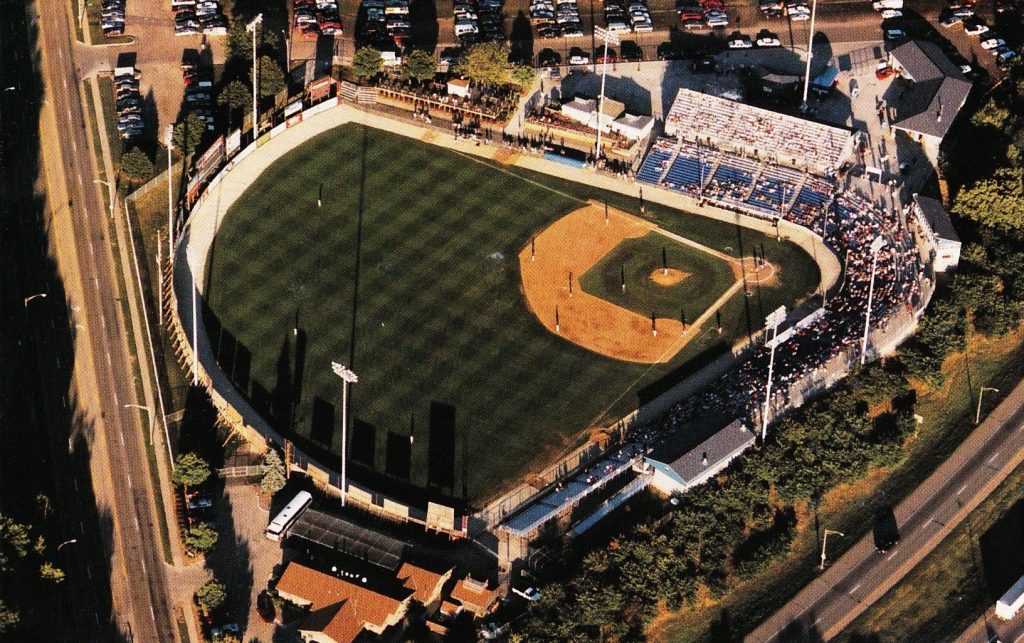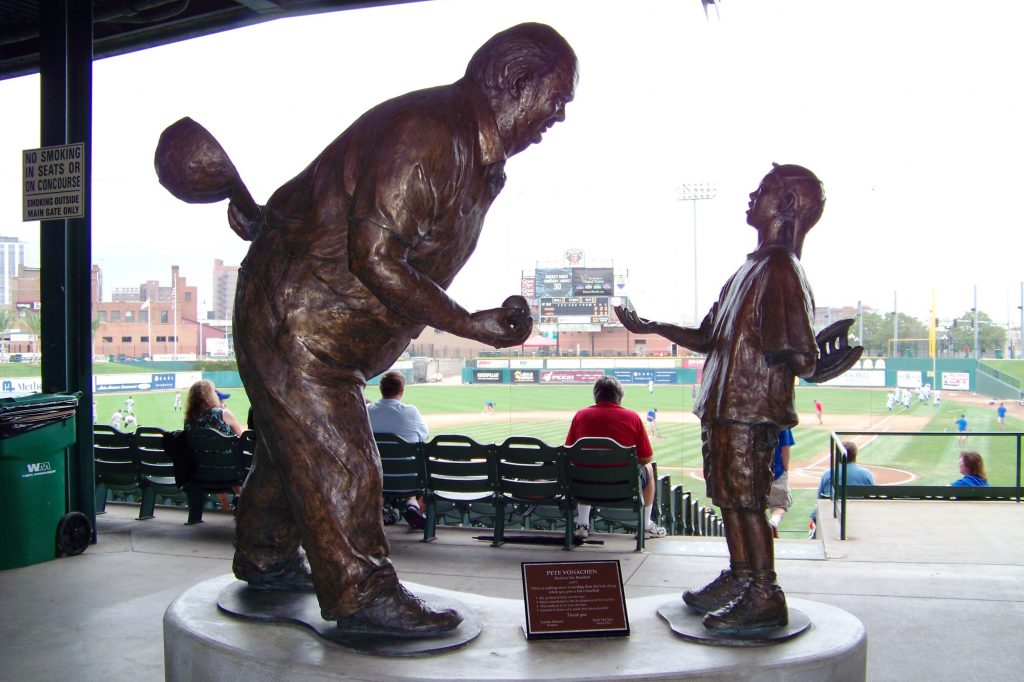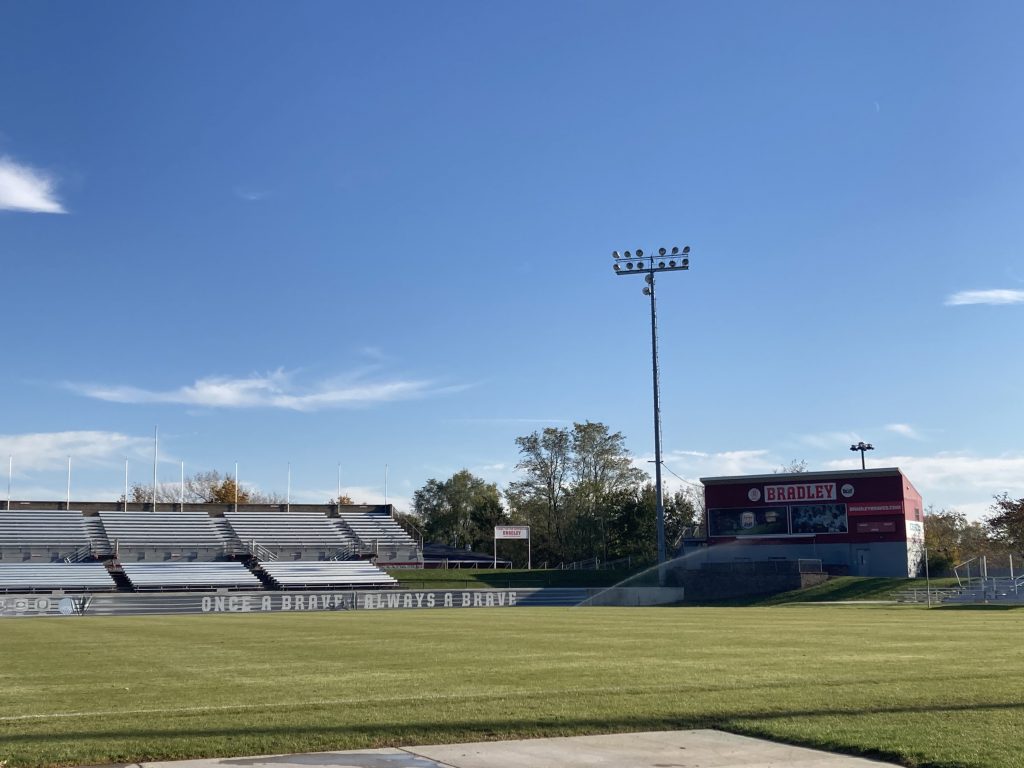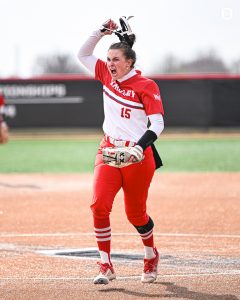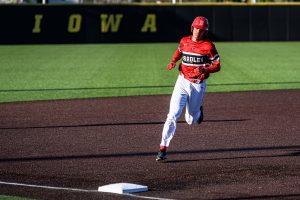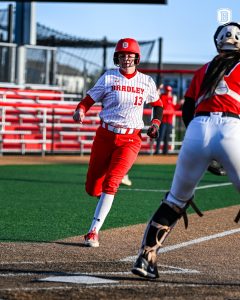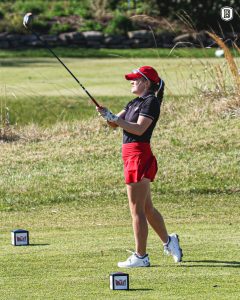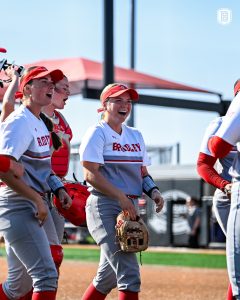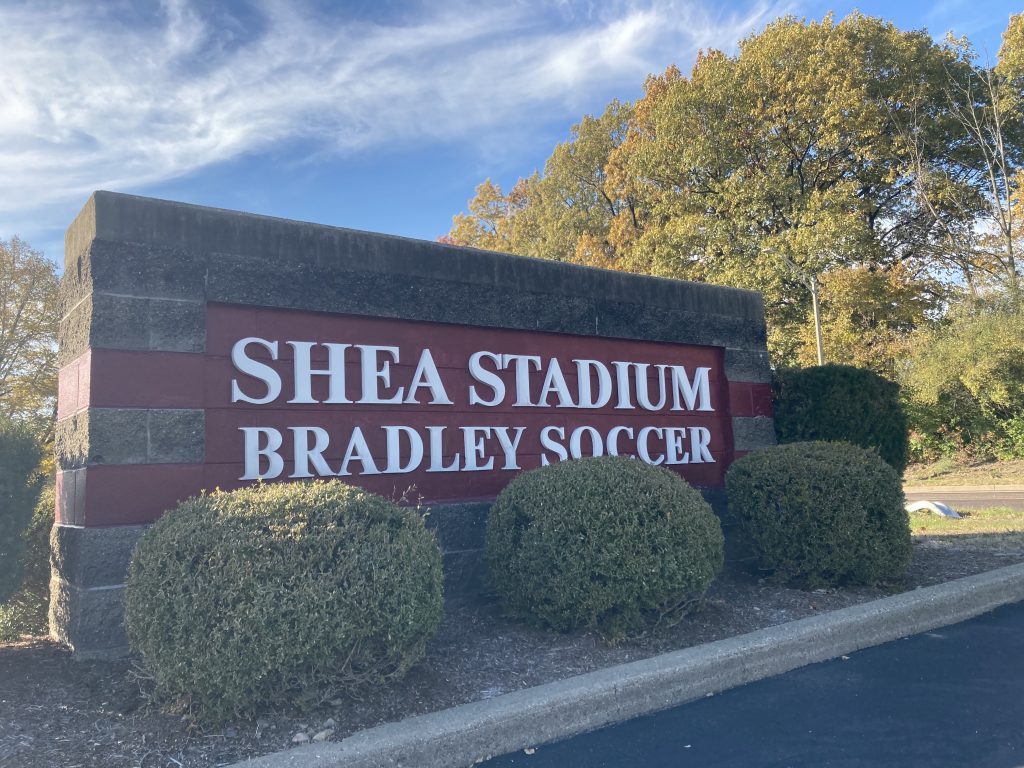
As cars hum along the primary artery of Peoria, Interstate 74, they encounter roadside signs for Shea Stadium on exit 91. Nestled atop the 90-degree curve of the interstate between Nebraska Avenue and University Street is the home of Bradley’s soccer team since 2002.
However, unless you’ve lived in Peoria for more than two decades, the stadium’s name might lead you to think that it’s a baseball field; possibly as a nod to the previous digs of MLB’s New York Mets. The guesses of those who notice the naming similarity or catch a glimpse of the baseball-style press box through the trees lining the highway would technically be correct.
Meinen Field, as it was then called, was constructed in 1968 as a baseball stadium for Bradley University and the Peoria Pacers collegiate summer league team, with a capacity of roughly 5,500 fans.
Despite the constant presence of collegiate baseball, professional minor league baseball came and went in Peoria. Affiliated ball lay dormant for 25 years after the original Peoria Chiefs folded along with the Triple-I league that they belonged to. In 1983, the Peoria Suns began play in the Midwest League before the team was purchased by local businessman Pete Vonachen and his son Rocky, returning to their original Chiefs nickname in the process.
The Chiefs played their home games at the Peoria Park District-owned Meinen Field, even leading the Midwest League in attendance for a few years during Peoria’s baseball heyday. While promotions and high-quality baseball were enough to draw thousands of fans into Meinen’s seats, one aspect of the stadium stood out: the seats themselves.
“When we first went in for Minor League baseball, there were no box seats,” Rocky Vonachen said. “We ended up getting some folding chairs and folding chairs were the box seats. Then you had your bleacher seats as well, but all the seats behind home plate and kind of from dugout to dugout were red and blue folding chairs.”
Even some 38 years later, Vonachen, a former Peoria Pacers batboy, recalls drilling holes into the bottom of the seats so that rainwater could drain off of them. Such a task didn’t seem out of the ordinary for the Vonachen family, who heavily emphasized fan experience.
(Temporarily) Rockin’ at Vonachen
Led by Pete, affectionately nicknamed “Peoria’s Mr. Baseball,” the Vonachen family revitalized baseball in the area, thanks to their priority of fostering a welcoming, fun and family-friendly environment at Meinen Field. In 1989, Vonachen sold the team to a group of Chicago-based investors — but the general state of the organization began to trend downwards just three years later and it was sold back to a group of 30-40 Peorians intent on keeping baseball alive in the River City.
The Chiefs and their facilities were given a new life again in 1992 when the stadium received a multi-million dollar facelift. Changes included office and concession renovations, more permanent stands and a new name: Vonachen Stadium.
“[The Peoria Park District] decided to [rename the stadium] when the renovations were being made,” Rocky Vonachen said. “[Pete Vonachen] was also with the Park District for a long time as a trustee of the Peoria Park Board, plus with his involvement with baseball, it was a perfect fit to name the facility after him.”
Pete Vonachen returned as the team’s owner in 1994, but as those who called Peoria home began to migrate toward the Illinois River for leisure experiences, the Chiefs organization decided it was time to do the same. With that, the decision was made to build a new stadium downtown.
Despite leaving the facility that meant incredible amounts to their family, the Vonachens embraced the move to O’Brien Field (now Dozer Park) in 2002.
“We were excited because we knew the benefits of moving downtown and being able to provide the fans with a major-league experience with all the amenities of a Major League ballpark, just on a smaller scale,” Rocky said.
During the same time, Bradley’s soccer team was facing their own conundrum of where to play in Peoria.
On the move
Not even 30 years old at the time, Bradley soccer head coach Jim DeRose came to Peoria in 1996 after spending four years as a graduate assistant at Illinois State. While the job may have been glamorous for DeRose at a young age, the soccer team’s home field lacked the same luster.
Becker Park sat about three miles northwest of Vonachen Stadium on Richwoods Boulevard. There, the Braves soccer team played and practiced. As DeRose described, the amenities were quite stark but nevertheless, he embraced them.
“There were no lights [for the field],” DeRose said. “There was a game field with a practice field next to it and bleachers for maybe 400 [fans]. What was crazy about that was [in 1998], we won the conference championship which was one of the best experiences because there were no lights. We were playing a championship game on a Friday at 2 o’clock and there were a couple thousand people in this little bandbox.”
The Braves’ humble, quaint facility hosted the MVC Championship game again in 1999, where undefeated Missouri State knocked off Bradley 2-1 in double overtime. Following the end of that season, the Braves found themselves looking for a place to call home.
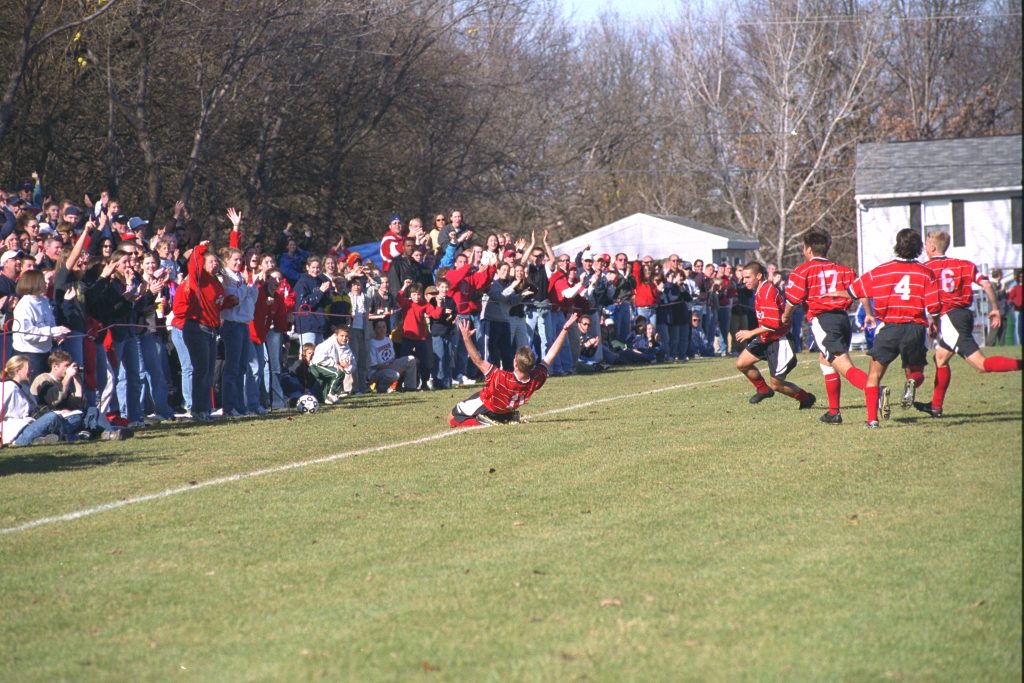
“We thought we were going to upgrade that and all of a sudden we get a phone call that more or less said, ‘Where that field is, we’re building a school there, so you’re out,’” DeRose said. “What were we going to do?”
As ground broke on what is now Pleasant Valley Intermediate School where the field at Becker Park used to be, the Braves scrambled and found their new home in McClallen Park in Morton, a 20-minute drive from Bradley’s campus. Holding practices at Eastside Center in East Peoria, DeRose’s team maintained usage of both fields past the turn of the century until news of the Chiefs proposed downtown stadium broke, rendering Vonachen Stadium vacant for the time being.
The Chiefs and Bradley held a strong relationship, as the former shared their digs with the Braves baseball team at Vonachen Stadium and allowed them to piggyback on their short move downtown.
As talks of moving facilities progressed, DeRose was ecstatic for the possibility of establishing a more permanent and suitable home at Vonachen Stadium. Interestingly enough, DeRose frequently visited the stadium during his assistant tenure at Illinois State, as his brother played for the Montreal Expos’ affiliate in the Midwest League.
Vonachen Stadium officially switched hands over to the Bradley soccer program when a land swap was negotiated between the university and the Peoria Park District in 2002. Thanks to the connection between Bradley and the Chiefs, the transition was nearly seamless.
“It was a home run; it was a grand slam,” DeRose said. “As it evolved, it certainly became one of the best venues in the Midwest.”
Fixer-upper
Moving into a 34-year old baseball stadium didn’t exactly fit the definition of “turn-key” for Bradley soccer. Swapping the land gave Bradley soccer some relief in their checkbook but significant work and investments had to be made in order to fit the standards of a soccer facility. But the building blocks were, quite literally, in place.
Features that stayed and are still reminiscent of a baseball stadium included the original press box (now club seating) and the original first-base side bleachers.
Parts that were removed included stands along the third-base line, which were torn out in order to accommodate the south end of the field. Improvements were made to the locker room, which stood behind the left field fence and is now several yards behind the new soccer press box. A section of bleachers was constructed below the original first-base line grandstand to bring fans closer to the action on the pitch.
However, the field itself was the biggest problem.
“What a lot of people don’t know is … when the field was put in … the field at one point was where they were building the interstate,” DeRose said. “That was kind of the refuse pile where they dug the topsoil out. So we put the field in but we had no idea that the dirt and the earth underneath was poor. [There were] just basically boulders.”
Munie Greencare Professionals, a company that worked on the St. Louis Cardinals’ Busch Stadium and the Kansas City Chiefs’ Arrowhead Stadium, remedied the situation by digging out and completely replacing two feet of soil, a process which required taking 300 dump truck loads of dirt out, according to DeRose. After pouring in 24 inches of a mixture of sand, gravel and topsoil plus cutting the grass down to golf course-length, Bradley’s soccer team had one of the finest playing surfaces in the Midwest.
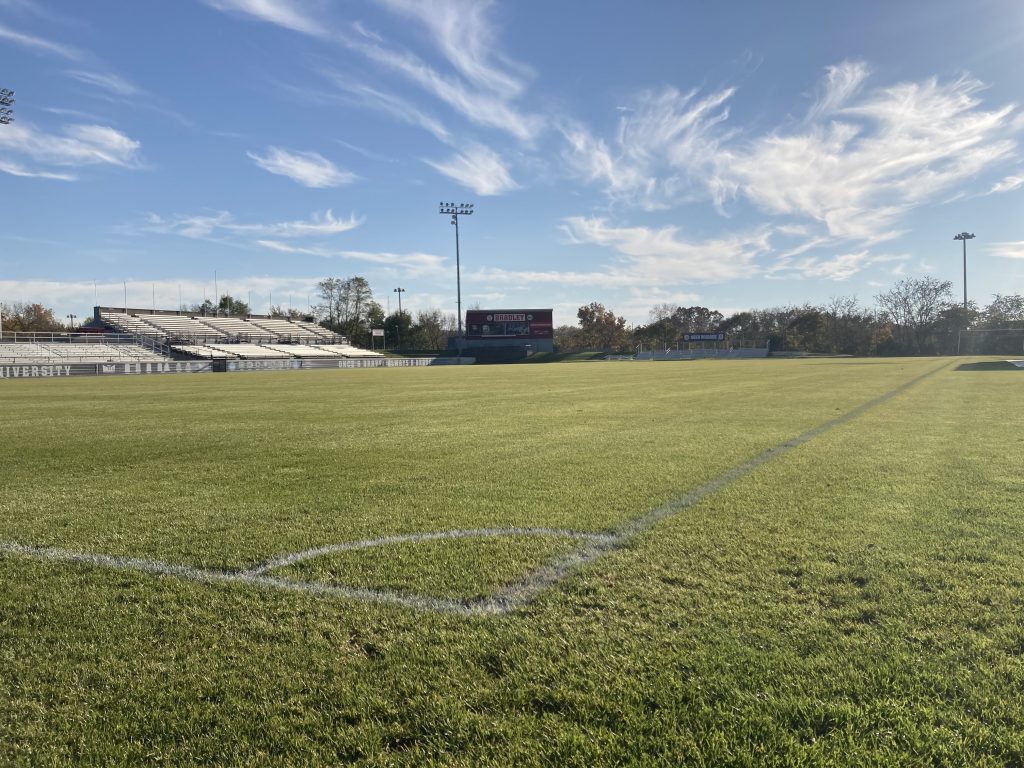
With the Braves’ improved facility came another name change to Shea Stadium, in honor of Bradley alumnus and staunch athletics supporter Tim Shea. Strong college soccer programs and even MLS teams took notice of Peoria’s new crown jewel as the stadium played host to a game between the Chicago Fire and Columbus Crew in 2008 and national college powerhouse Notre Dame visited Bradley in 2015.
“We’re one of America’s premier — or at least in the Midwest, bluegrass — soccer-specific stadiums,” DeRose said. “That’s why so many good teams come here to play.”
DeRose strongly believes that the renovated white clubhouse (the largest in Division I soccer at 5,200 square feet), fans’ proximity to the field, adjacent track used for tailgates, remaining baseball features and Shea’s playing surface make it one of the best and most charming college soccer stadiums he’s seen in his 25 years as a head coach.
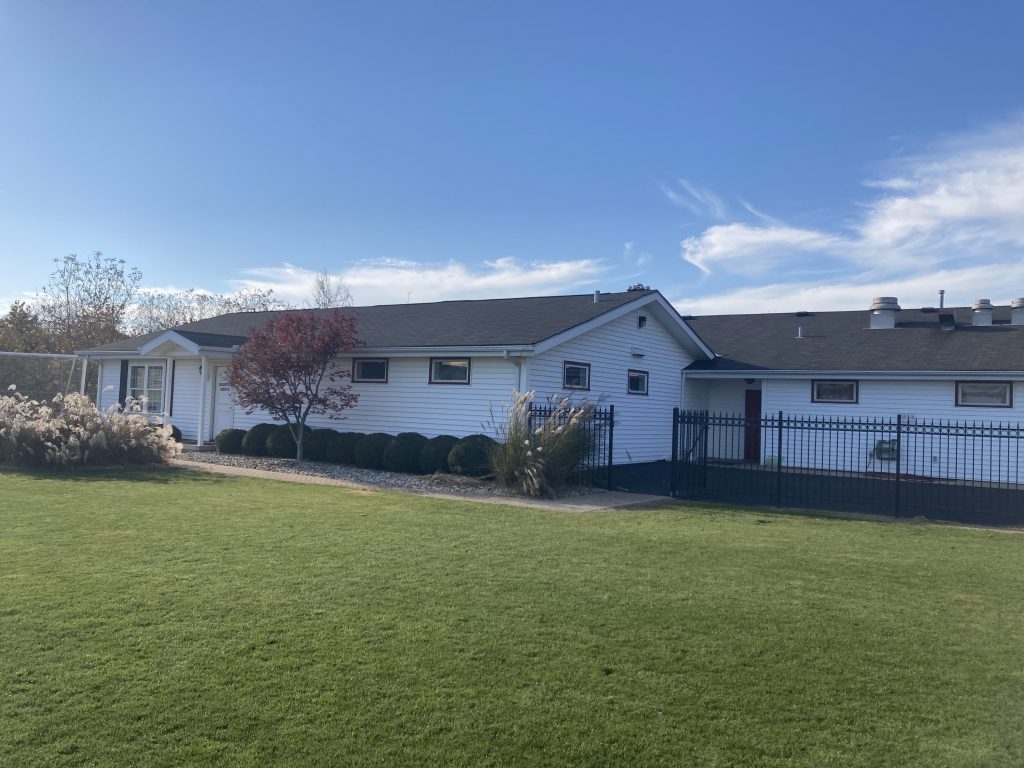
Clubhouse at Shea Stadium 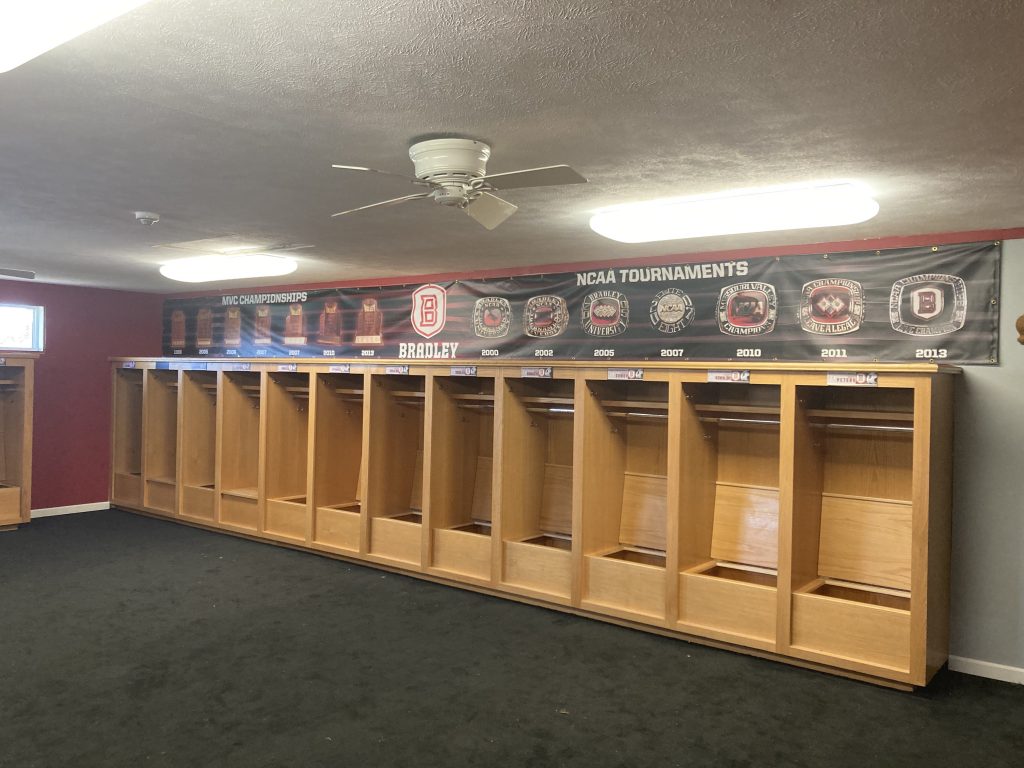
Bradley’s renovated locker room 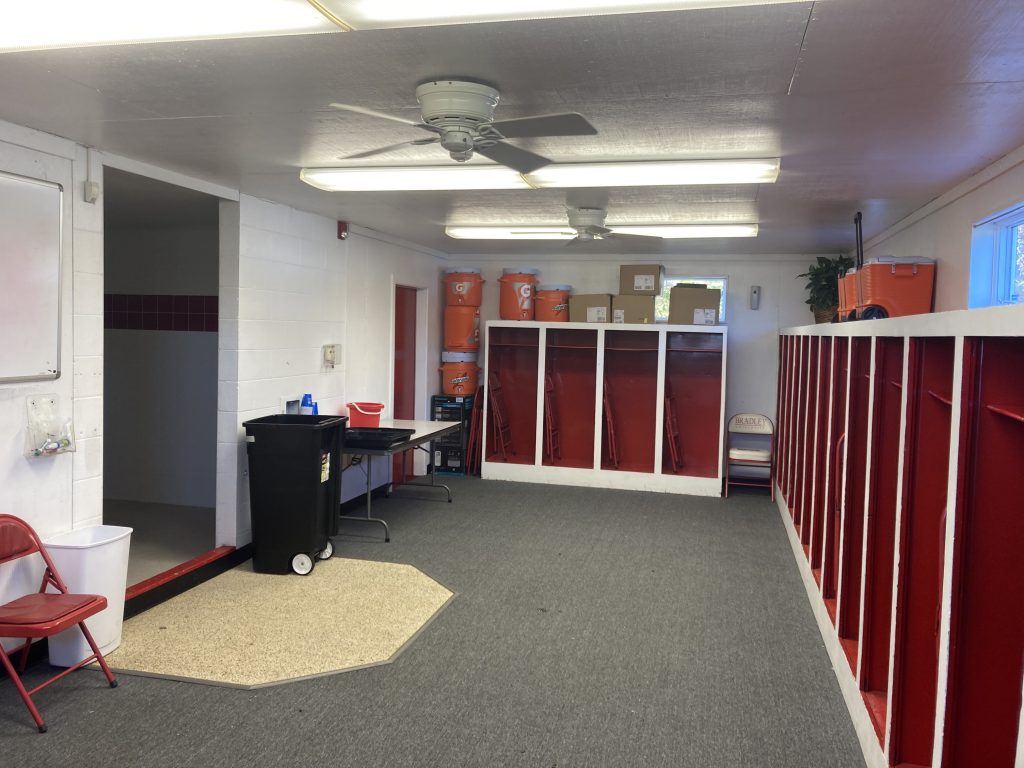
Visitors locker room still intact from Vonachen Stadium. 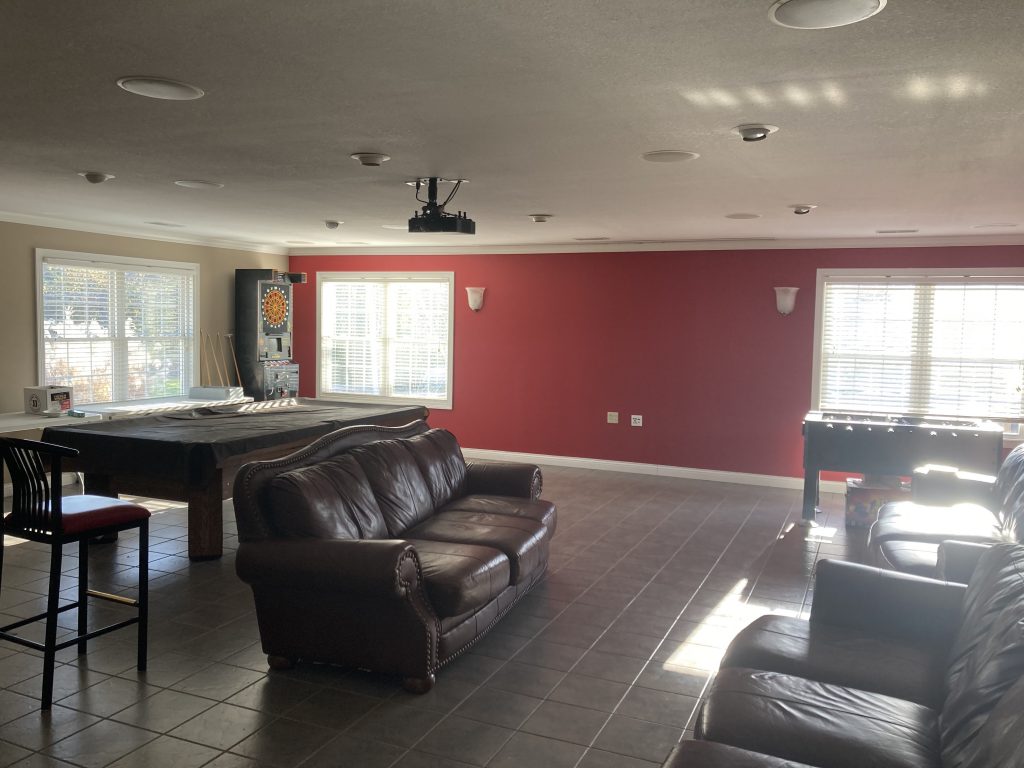
Players lounge in the clubhouse 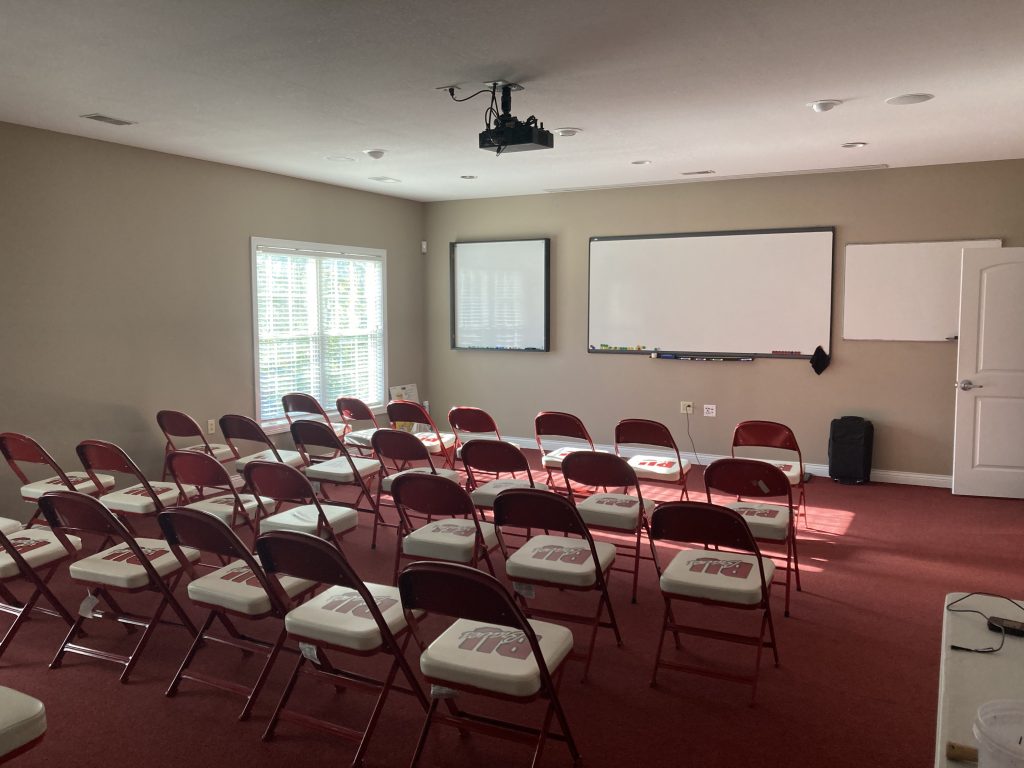
Bradley soccer’s film room
“Quirky is a great word to describe it, but it’s our quirky,” DeRose said. “One of the other things we kept was the grass berm that separates the press box from the tall bleachers. The coolest thing ever … was the first game when it opened up, there were these little kids rolling down that hill almost like the Little League World Series.”
Minor league feel remains
Walk into Shea Stadium and right away you may notice its seemingly abnormal features. While converting a stadium with a name synonymous with Peoria baseball into a soccer facility may not have been the Bradley soccer program’s first idea, it was certainly the right one.
“We were happy that Bradley was going to be able to take the facility and put it to such good use and turn it into one of the top soccer facilities in the Midwest,” Vonachen said. “It was just a great transaction for everybody and it benefited a lot of people.”
Shea Stadium’s history is evident; baseball stars such as Greg Maddux, Mark Grace and Albert Pujols once roamed the white clubhouse behind the current soccer field. In some ways, both the stadium’s and the Vonachen family’s baseball legacy still lives on, which DeRose noticed during the first soccer game ever held there.
“Looking over [on the grass berm], we had those Thundersticks, and [I] was watching these five and six-year-olds sword fighting [with Thundersticks] and rolling down the hills,” DeRose said. “But at the same time, the parents were watching the game and it was exactly what minor league baseball was. I love the fact that we kept that minor league baseball feel and family-oriented places … I really enjoy those features.”
DeRose feels immense pride in carrying on the stadium’s tradition and has no plans to remove the original press box, grass berms and baseball-style bleachers.
“I think one of the coolest things was that, God rest his soul, Rocky’s dad [Pete] came out here and gave it his stamp of approval because it was a baseball stadium first,” DeRose said. “It was something that his family put all their blood, sweat, tears and equity into it and it made me feel good that it was going to stay in the family — the Peoria family, the Bradley family, the Vonachen family.”
